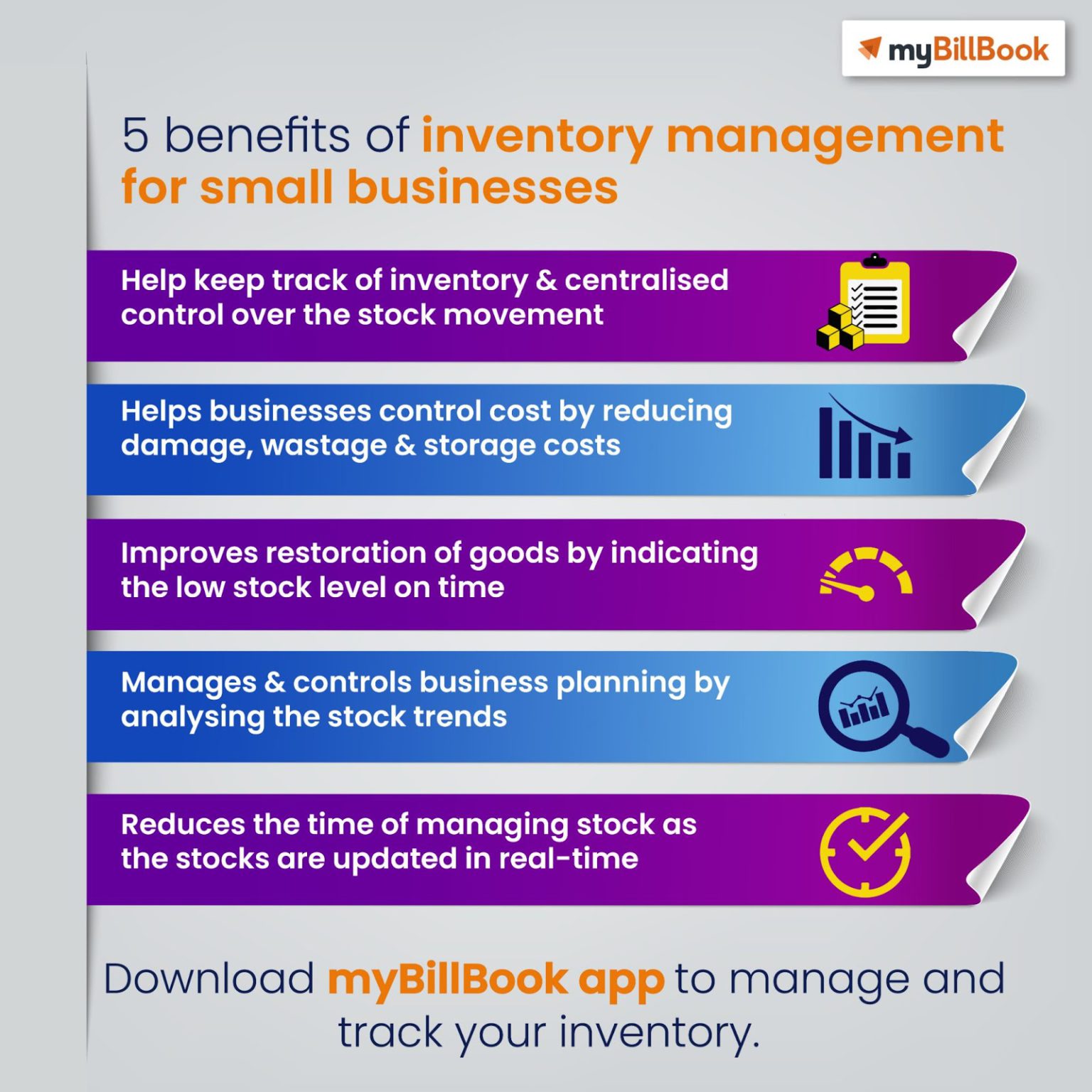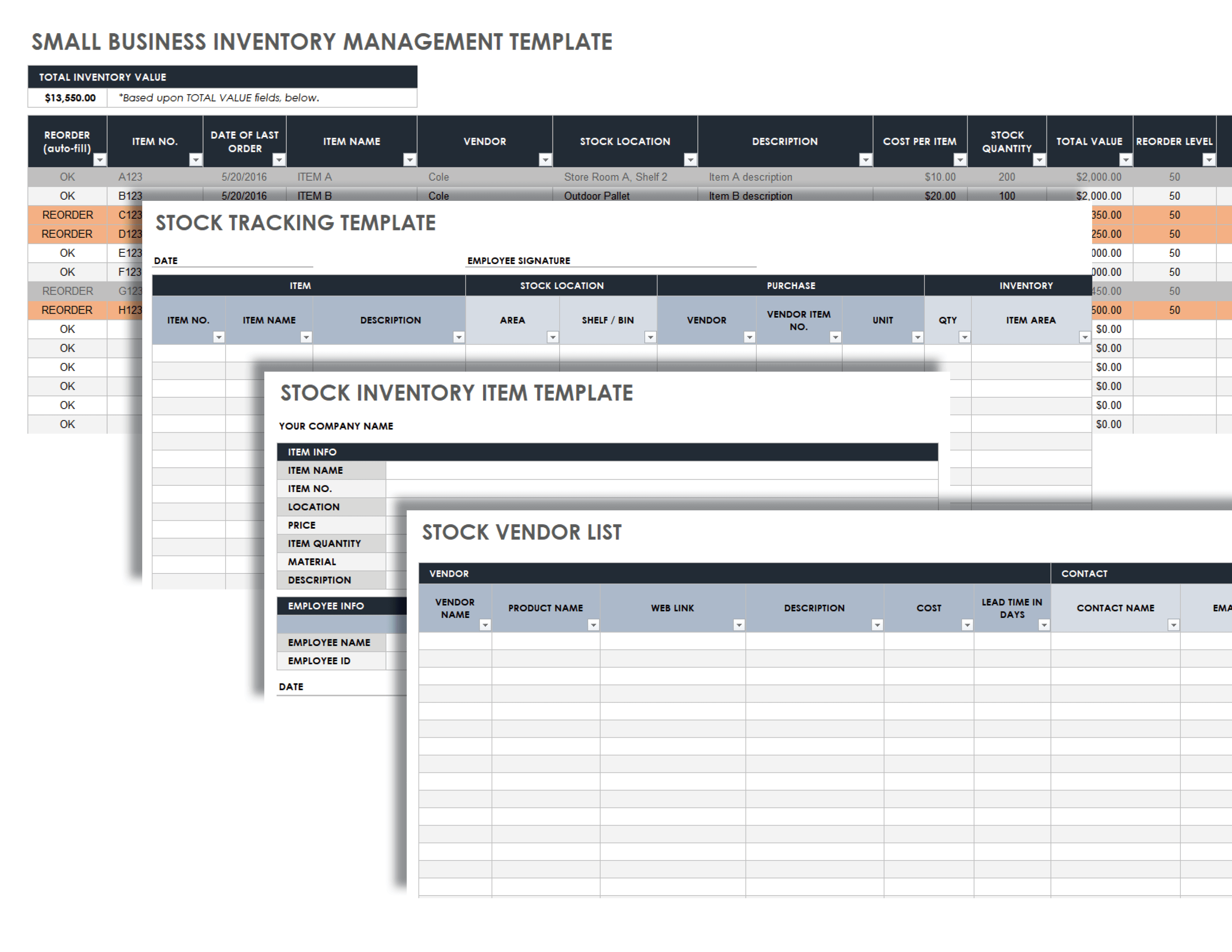Inventory management for small businesses – In the realm of small business operations, inventory management stands as a cornerstone, shaping the trajectory of success. Effective inventory management empowers businesses to streamline their operations, minimize waste, and maximize profitability. This comprehensive guide delves into the intricacies of inventory management, providing small businesses with the tools and knowledge to navigate the complexities of stock control.
Throughout this guide, we will explore the fundamental principles of inventory management, delve into various tracking methods, and uncover optimization techniques to minimize waste and maximize efficiency. We will also shed light on the role of technology in enhancing inventory management and examine the unique challenges faced by small businesses operating in the ecommerce landscape.
Inventory Management Basics for Small Businesses

Effective inventory management is crucial for small businesses to optimize operations, minimize costs, and enhance customer satisfaction. Poor inventory management can lead to stockouts, overstocking, and inefficiencies that can hinder growth and profitability.
To establish a solid inventory management system, small businesses should consider the following best practices:
Determining Inventory Needs, Inventory management for small businesses
- Analyze historical sales data to forecast demand and determine optimal inventory levels.
- Identify lead times for ordering and receiving inventory to ensure timely replenishment.
- Consider seasonal fluctuations and market trends to adjust inventory levels accordingly.
Inventory Tracking
- Implement an inventory management system to track stock levels, purchase orders, and sales transactions.
- Use barcodes or RFID tags to automate inventory tracking and reduce errors.
- Regularly conduct physical inventory counts to verify accuracy and identify discrepancies.
Inventory Control
- Establish reorder points and safety stock levels to prevent stockouts and overstocking.
- Implement first-in, first-out (FIFO) or last-in, first-out (LIFO) inventory valuation methods to ensure accurate cost of goods sold.
- Monitor inventory turnover rates to identify slow-moving or obsolete items.
Inventory Tracking Methods
Effective inventory tracking is crucial for small businesses to maintain optimal stock levels, reduce waste, and improve profitability. Several methods are available, each with its advantages and disadvantages. Understanding these methods will help you choose the one that best suits your business needs.
Manual Inventory Tracking
This involves physically counting and recording inventory levels using pen and paper or spreadsheets. It is a simple and inexpensive method suitable for small businesses with a limited number of SKUs. However, it can be time-consuming, prone to errors, and challenging to maintain accuracy.
Periodic Inventory Tracking
Inventory is counted and recorded at regular intervals, such as weekly or monthly. This method provides a snapshot of inventory levels at specific points in time and is less labor-intensive than manual tracking. However, it can result in inaccurate data if inventory fluctuates significantly between counts.
Perpetual Inventory Tracking
This method involves continuously updating inventory records as transactions occur, using a computerized system or specialized software. It provides real-time visibility into inventory levels and allows for more accurate forecasting and replenishment. However, it requires a reliable data entry process and can be more expensive than manual or periodic tracking.
Radio Frequency Identification (RFID) Tracking
RFID technology uses radio waves to identify and track inventory items tagged with RFID chips. This method offers high accuracy and real-time visibility, but it can be expensive to implement and requires specialized equipment.
Barcode Tracking
Barcode scanners are used to capture data from barcodes attached to inventory items. This method is relatively inexpensive and provides accurate tracking, but it requires the manual scanning of each item, which can be time-consuming.
Choosing the Right Method
The best inventory tracking method for your small business depends on factors such as the size and nature of your inventory, the frequency of transactions, and your budget. Consider the advantages and disadvantages of each method and choose the one that aligns with your business needs and resources.
Inventory Optimization Techniques

Inventory optimization is crucial for small businesses to minimize waste and maximize efficiency. By implementing effective strategies, businesses can ensure they have the right amount of inventory at the right time, reducing costs and improving profitability.
Determining Optimal Inventory Levels
Determining optimal inventory levels is essential for effective inventory management. Several factors influence these levels, including:
- Demand patterns: Historical sales data and forecasts can help predict future demand and determine appropriate inventory levels.
- Lead time: The time it takes to receive new inventory should be considered to avoid stockouts or excessive inventory.
- Safety stock: A buffer of extra inventory held to mitigate unexpected fluctuations in demand or supply.
- Carrying costs: The costs associated with holding inventory, such as storage, insurance, and spoilage.
- Ordering costs: The costs incurred when placing an order for new inventory, including shipping and handling.
Use of Technology
Technology can significantly enhance inventory optimization. Inventory management software can automate processes, provide real-time data, and generate reports for analysis.
- Automated inventory tracking: Software can track inventory levels in real-time, reducing manual errors and improving accuracy.
- Demand forecasting: Software can analyze historical data and market trends to forecast future demand, helping businesses anticipate inventory needs.
- Reorder point calculation: Software can automatically calculate reorder points based on demand patterns and lead times, ensuring timely replenishment.
- Inventory optimization algorithms: Some software offers optimization algorithms that suggest optimal inventory levels and reorder quantities, considering multiple factors.
Inventory Management Software for Small Businesses

Inventory management software can help small businesses streamline their inventory management processes, save time and money, and improve customer satisfaction. There are many different inventory management software options available, so it’s important to choose the right one for your business.
When choosing inventory management software, it’s important to consider your business’s specific needs. Some of the factors to consider include the size of your business, the types of products you sell, and your budget.
Comparison Table of Inventory Management Software Options
The following table compares some of the most popular inventory management software options for small businesses:
| Feature | Inventory Tracker | Sortly | Zoho Inventory |
|---|---|---|---|
| Cloud-based | Yes | Yes | Yes |
| Mobile app | Yes | Yes | Yes |
| Barcode scanning | Yes | Yes | Yes |
| Multi-location inventory management | No | Yes | Yes |
| Purchase order management | Yes | Yes | Yes |
| Sales order management | Yes | Yes | Yes |
| Reporting | Yes | Yes | Yes |
| Pricing | Free plan available; paid plans start at $49/month | Free plan available; paid plans start at $29/month | Free plan available; paid plans start at $49/month |
As you can see, there are a number of different inventory management software options available for small businesses. The best way to choose the right one for your business is to compare the features and pricing of different options and select the one that best meets your needs.
Inventory Management in Ecommerce
Inventory management in ecommerce poses unique challenges for small businesses. With online sales, businesses must track inventory across multiple channels, manage shipping and returns, and ensure accurate inventory levels to avoid overstocking or stockouts.
Integrating inventory management with ecommerce platforms is crucial for streamlining operations. This integration allows businesses to automatically update inventory levels based on sales, track orders, and manage stock across different channels. Additionally, using inventory management software specifically designed for ecommerce can provide real-time inventory visibility, automate tasks, and optimize inventory levels.
Managing Inventory Across Multiple Channels
Managing inventory across multiple channels, such as an online store, physical store, and marketplaces, requires careful coordination to avoid discrepancies and ensure accurate stock levels. Here are some tips for effective multi-channel inventory management:
- Centralize inventory data: Use a central inventory management system that provides a single view of inventory levels across all channels.
- Use inventory syncing software: Implement software that automatically updates inventory levels in real-time across all channels.
- Set up reorder points: Establish reorder points for each item based on historical sales data and lead times to avoid stockouts.
- Monitor inventory regularly: Regularly review inventory levels and adjust reorder points as needed to ensure optimal stock levels.
End of Discussion
By embracing the principles and practices Artikeld in this guide, small businesses can transform their inventory management into a competitive advantage. With a solid understanding of stock control, businesses can optimize their operations, reduce costs, and enhance customer satisfaction. Effective inventory management empowers small businesses to navigate the complexities of the market, adapt to changing demands, and ultimately achieve long-term success.
Detailed FAQs: Inventory Management For Small Businesses
What are the key benefits of effective inventory management for small businesses?
Effective inventory management empowers small businesses to reduce waste, optimize cash flow, improve customer satisfaction, and gain a competitive edge in the market.
How can small businesses select the most appropriate inventory tracking method?
The choice of inventory tracking method depends on factors such as business size, product type, and budget. Small businesses can choose from manual methods like spreadsheets or invest in automated inventory management software.
What are some practical inventory optimization techniques for small businesses?
Small businesses can optimize inventory levels through techniques like ABC analysis, just-in-time inventory, and safety stock management.